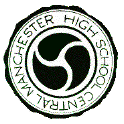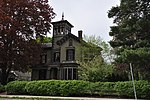Manchester High School Central

Manchester High School Central is the oldest public high school in the state of New Hampshire. Located in the heart of Manchester, New Hampshire, approximately 1,200 students attend from communities such as Hooksett and Manchester, and it formerly served Candia. The name was changed from Manchester High School in 1922 when Manchester West High School opened. Including Central, Manchester has a total of four public high schools, all a part of the Manchester School District. Its athletics teams are nicknamed the Little Green (after Dartmouth's Big Green) and the school colors are green and white. Sports Illustrated named the school's athletic department as the best in the state of New Hampshire in 2005.The school originally had crimson red as its school color, but Concord High School had taken the color soon after. After the start of the 20th century, the two schools decided that the winner of a league championship would keep its colors; Concord won, and Manchester Central chose forest green as its new color. Ronald Mailhot was named interim principal at the end of 2011, following the retirement of former principal John R. Rist, but returned as full-time principal in 2012. Mailhot later resigned in the middle of the 2013-2014 school year and was replaced by John Rist for his second stint as principal of Central. Rist retired at the end of the 2014 school year and was succeeded by John M. Vaccarezza. After Vaccarezza’s departure in 2021, Debora Roukey became the school’s first female principal. Central High School's student newspaper The Little Green was commended by Columbia Scholastic Press and featured in the Manchester Daily Express as well as the New Hampshire Union Leader. In 2012, the New England Scholastic Press Association (NESPA) awarded its Highest Achievement award in Scholastic Editing and Publishing to the newspaper for the 2011-2012 school year.
Excerpt from the Wikipedia article Manchester High School Central (License: CC BY-SA 3.0, Authors, Images).Manchester High School Central
Beech Street, Manchester
Geographical coordinates (GPS) Address Website External links Nearby Places Show on map
Geographical coordinates (GPS)
| Latitude | Longitude |
|---|---|
| N 42.993 ° | E -71.454 ° |
Address
Central High School
Beech Street 535
03104 Manchester
New Hampshire, United States
Open on Google Maps







